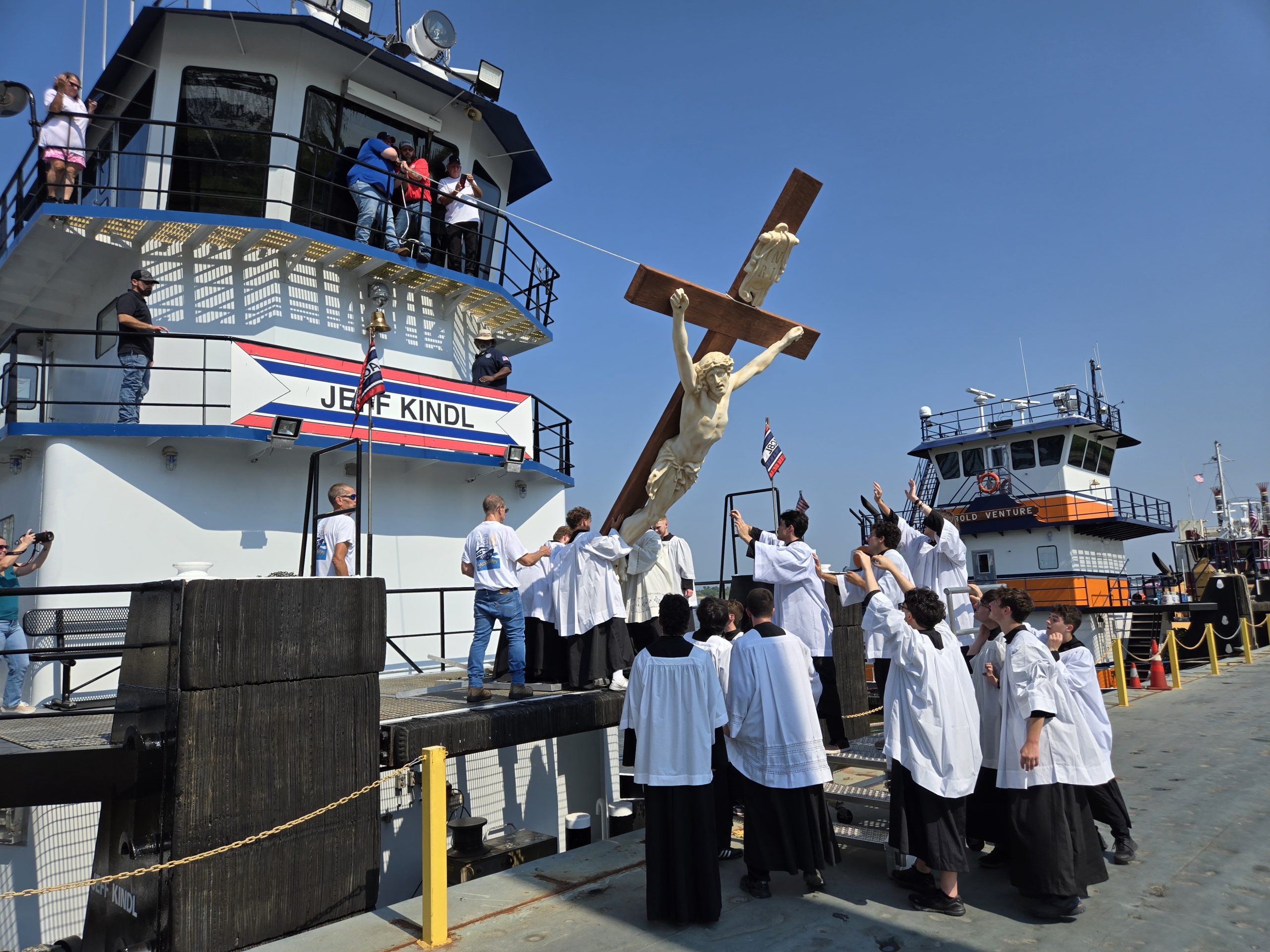Editor’s note: This is the first of a two-part series on the Fête-Dieu du Mississippi, a two-day blessing-of-the-fleet event for vessels operating on the Lower Mississippi River between Baton Rouge, La., and New Orleans. A full report of the procession, held August 14-15, will appear in the next issue of The Waterways Journal.
The first Fête-Dieu du Mississippi, a two-day blessing of the Mississippi River fleet held August 14-15, began with a Mass and procession in Baton Rouge, La.
The Rev. Michael Champagne, a priest at the Community of Jesus Crucified, said the event celebrated not only the Mississippi River but the state of Louisiana and the cultural and economic benefits the river brings.
Planning began almost three years ago. Champagne, who grew up in southwest Louisiana near the boyhood home of Louisiana Gov. Jeff Landry, is the driving force behind a similar fête on Bayou Teche in which mostly fishing, shrimping and oyster harvesting boats have been celebrated for 10 years.
Nearly three years ago, Champagne called Landry, who was then attorney general of Louisiana, to ask his advice about a possible blessing of the state and river. Landry told Champagne that he should start the planning with the pilot associations. He then introduced Champagne to Capt. Louis Toby Wattigney Jr., a pilot of the New Orleans-Baton Rouge Steamship Association (NOBRA).
Together, they secured Coast Guard approval for a 2-mile moving safety zone around the seven boats of the procession and any boats—up to eight more—to join in for all or parts of the voyage. The procession boats overnighted in Convent, La., at the dock of American Commercial Barge Line’s Convent Fleet.
The Catholic Church played a large role in the development of Louisiana as missionaries accompanied French and Spanish explorers and established parishes across the state.
Then, as today, the Mississippi River was the main highway. Churches were built along the river and, since services were not always scheduled at set times, church bells would ring to announce the upcoming services.
The two-day blessing of the fleet event commenced with a Mass at St. Joseph Cathedral in Baton Rouge. The eucharistic procession then boarded the vessels at the Shamrock Marine dock adjacent to the I-10 bridge on the east bank. River prayer services and gatherings for the blessing were held at the riverside towns of Plaquemine, Donaldsonville and Convent.
As with the bells at churches of old, the first boat in the flotilla carried bells to announce the arrival of the procession so those attending services along the way could head to the levees.
Champagne, a mechanical engineer by trade who formerly worked at power plants along the river, retired after receiving his calling to the priesthood in 1988. He is a historian and has gathered an impressive collection of bells that were mounted on the lead boat. Those bells included the following: a bell cast in 1850 for the ancient “Mother Church of the Acadians” in St. Martinville; a bell dating to 1894 that called monks to prayer in three different monasteries in Louisiana for the past 130 years; a bell originally installed in 1938 at the old St. Mary of the River Church in Union on the east bank of the river (That bell fell when the steeple collapsed during Hurricane Betsy in 1965.); an 1894 bell from St. John Church in Edgard that was removed after Hurricane Ida; and a bell from the First Baptist Mission in St. Martinsville, dating from 1896.
The second boat carried a 17-foot crucifix that was built for this event. Champagne said most Catholic processions are on foot, with religious articles carried by raised hands. Most watching those processions are seldom more than 100 feet away.
In contrast, the river procession required larger religious items to be constructed so that onlookers could see them.
The third boat carried the incense. Champagne said he has ministered to a lifer inmate at the state prison at Angola who has been in prison since he was 19 years old. The reformed inmate made the incense device as a show of respect.
Two boats carried the eucharist. Another boat carried a statue of Mary, and the seventh boat carried a statue of St. Joseph. Joy Mathey, a licensed captain, was aboard the seventh boat, monitoring VHF Channel 69 and making arrangements for additional boats to enter or leave the procession.




